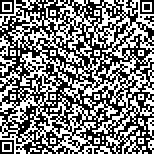| 引用本文: | 宋维佳,宋秀贤,俞志明,李靖,张悦.海洋中麻痹性贝类毒素的合成转化及其影响因素研究进展[J].海洋科学,2022,46(9):117-129. |
| |
|
| |
|
|
| 本文已被:浏览 805次 下载 1080次 |

码上扫一扫! |
|
|
| 海洋中麻痹性贝类毒素的合成转化及其影响因素研究进展 |
|
宋维佳1,2,3,4, 宋秀贤1,2,3,4, 俞志明1,2,3,4, 李靖1,2,3, 张悦1,2,3
|
|
1.中国科学院海洋研究所海洋生态与环境科学重点实验室, 山东 青岛 266071;2.青岛海洋科学与技术试点国家实验室 海洋生态与环境科学功能实验室, 山东 青岛 266237;3.中国科学院海洋大科学研究中心, 山东 青岛 266071;4.中国科学院大学, 北京 100049
|
|
| 摘要: |
| 麻痹性贝类毒素(paralytic shellfish toxins,PSTs)是由某些甲藻产生的一种高毒性神经毒素,在海洋环境中分布广、危害大,可对水产养殖和人类健康造成重大危害;PSTs毒素的毒性大小随种类和结构的不同有较大差异。迄今,国内外学者针对PSTs的来源分布、迁移转化、生物合成及其影响因素等开展了大量的调查研究,但目前对于藻细胞产毒的生物合成途径、遗传学特征及其环境调控机理等研究仍处于起步阶段。PSTs的生物合成过程不仅与藻细胞自身生长阶段有关,还会受到光照、温度、营养盐等多种环境因素的影响,环境条件的改变会引起藻细胞毒素组成和含量发生不同程度的变化。近年来,研究人员应用基因组学和蛋白质组学技术,发现了产生PSTs的典型甲藻——亚历山大藻(Alexandrium)细胞内与PSTs毒素生物合成相关的某些基因或蛋白质,对我们更清晰地了解亚历山大藻产生PSTs毒素的机制具有重要意义。本文综合以往的研究报道,对亚历山大藻中PSTs的生物合成与转化及其主要影响因素进行了总结,以期为产毒有害藻华的防治提供科学依据。 |
| 关键词: 甲藻 麻痹性贝类毒素 生物合成 环境因素 |
| DOI:10.11759/hykx20201001001 |
| 分类号:Q-1 |
| 基金项目:国家自然科学基金项目(41976148);山东省重大科技创新工程项目(2019JZZY010808);2019年度“泰山学者攀登计划”(泰山学者工程专项经费资助) |
|
| Research progress on the biosynthesis, transformation, and factors affecting paralytic shellfish toxins in the ocean |
|
SONG Wei-jia1,2,3,4, SONG Xiu-xian1,2,3,4, YU Zhi-ming1,2,3,4, LI Jing1,2,3, ZHANG Yue1,2,3
|
|
1.Key Laboratory of Marine Ecology and Environmental Sciences, Institute of Oceanology, Chinese Academy of Sciences, Qingdao 266071, China;2.Laboratory of Marine Ecology and Environmental Science, Pilot National Laboratory for Marine Science and Technology (Qingdao), Qingdao 266237, China;3.Center for Ocean Mega-Science, Chinese Academy of Sciences, Qingdao 266071, China;4.University of Chinese Academy of Sciences, Beijing 100049, China
|
| Abstract: |
| Paralytic shellfish toxins (PSTs) are highly toxic neurotoxins produced by dinoflagellates. They are widely distributed in the marine environment and can cause great harm to aquaculture animals and human health. The toxicity of PSTs varies greatly with type and structure. Many studies have been conducted on the source, distribution, transformation, biosynthesis and factors influencing paralytic shellfish toxins. However, studies on the environmental regulatory mechanism, the biosynthetic pathway, and the genetic characteristics of toxin production are still rare. The biosynthesis of PSTs is affected by many environmental factors, such as light, temperature, and nutrients. A change in environmental conditions will change the composition and content of the toxins to varying degrees. Some researchers have used genomics and proteomics techniques to screen and identify genes or proteins related to the biosynthesis of toxins in Alexandrium. It is important to understand the biosynthetic pathway of Alexandrium toxins more clearly. Based on the toxin-producing physiology of Alexandrium, this study summarizes the biosynthesis and transformation of the PSTs in Alexandrium and the main factors affecting synthesis to provide new ideas for preventing and controlling harmful algal blooms, reducing the damage of harmful algal blooms, and ensuring human health and marine ecological security. |
| Key words: dinoflagellates paralytic shellfish toxins biosynthesis environmental factors |
|
|
|
|
|
|
